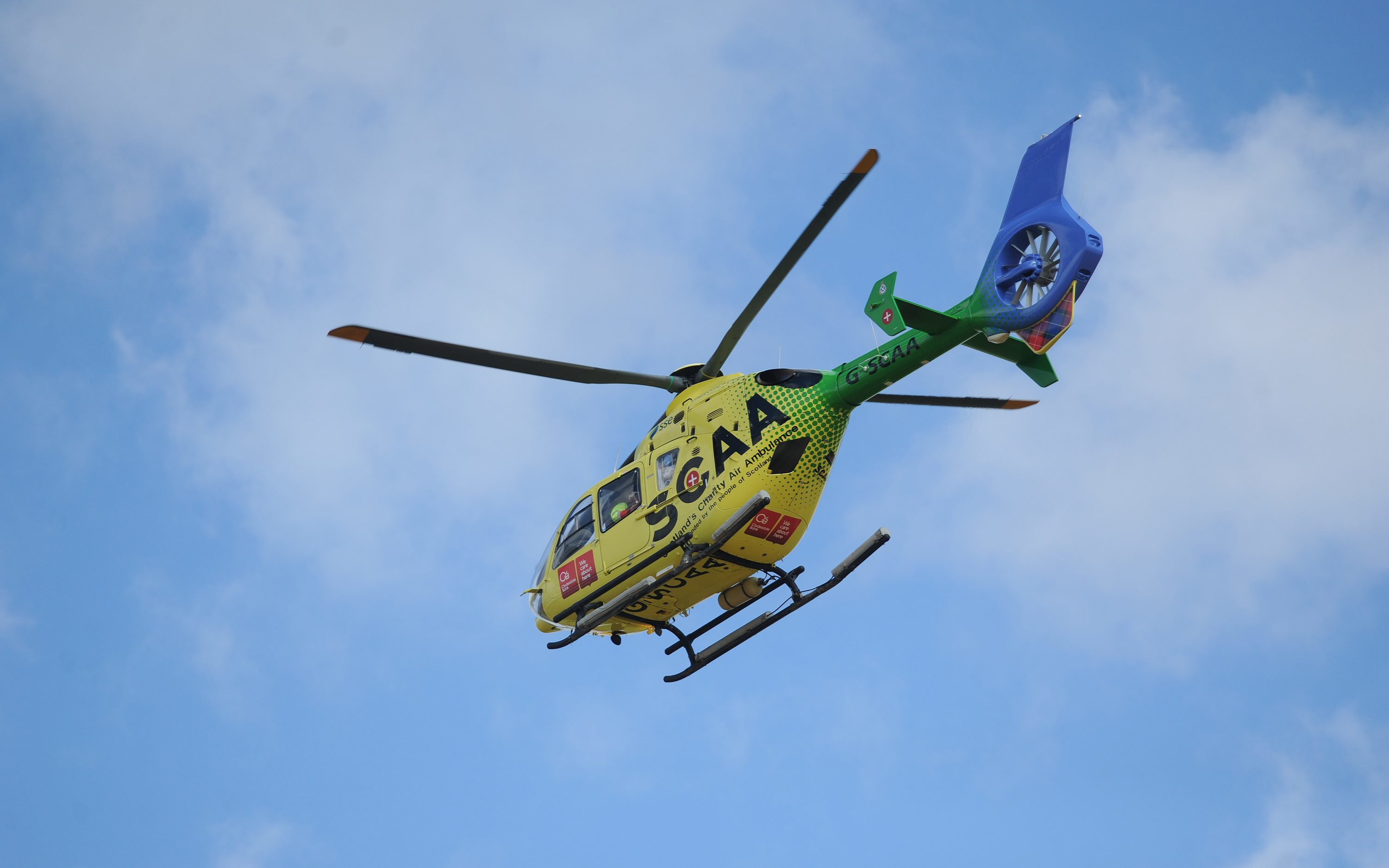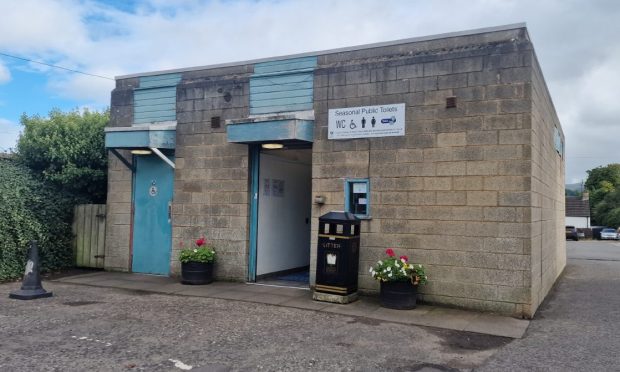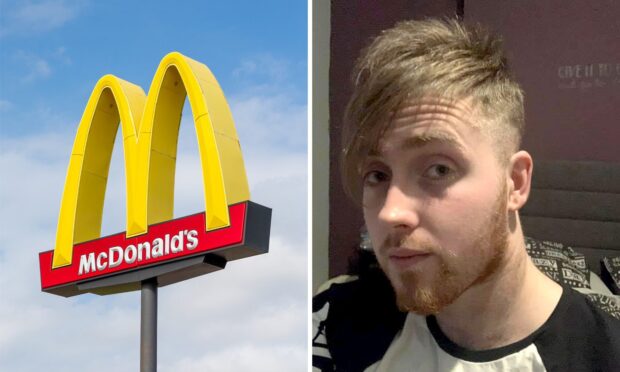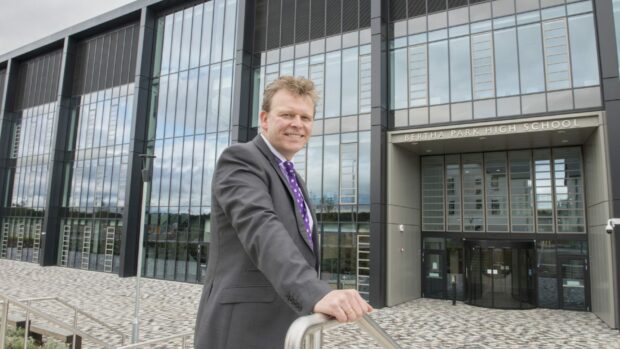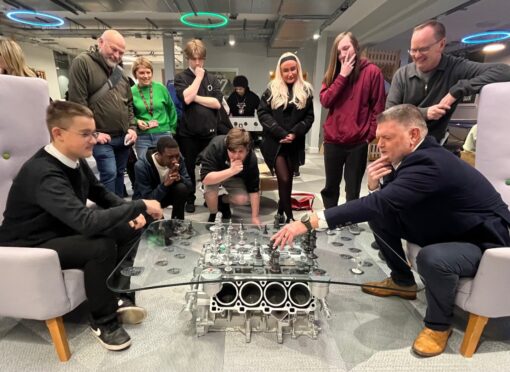Scotland’s charity air ambulance has received a donation of £30,000 from the country’s police officers.
The cash, which has come from the Scottish Police Benevolent Fund (SPBF), has been given in recognition of support the SCAA can give officers at high-stress road traffic emergencies.
Police Scotland’s Chief Constable Phil Gormley, who is also the fund’s president, visited SCAA’s Perth Airport base on Monday to personally thank the air ambulance team for all they do.
As he did so, the helicopter was called out to another mercy mission, believed to be at a location on the west coast of Scotland.
He said: “Police officers are often first on the scene at road traffic collisions, not knowing what they may find. Our officers provide a high level of service and expertise, but there is reassurance in knowing that they can call on specialist support services like the air ambulance.
“The air ambulance provides a service that is second to none. Working together, Police Scotland and the air ambulance have ensured that people involved in road accidents get the very best service, the best care and that lives are saved.
“SPBF support can be given to a police related charity which benefits our members and SCAA was seen as one which certainly does that.”
Road Policing Sergeant Paul Taylor has spent 15 years racing to the scene of horrific rural road crashes and motorway pile-ups and he has benefited personally from the repeated partnership with SCAA.
“A lot of accidents take place in remote and rural parts of the country and it’s an increasingly stressful situation when you’re out there on your own with seriously injured motorists or motorcyclists,” he said.
“We do what we can to provide comfort and reassurance until medics arrive, but when you hear over the radio that SCAA is on its way you feel immense relief that the helicopter will put professional paramedics on the ground and get casualties quickly to the hospital care they require.
“We can then get on with our other primary role of protecting any evidence at the scene and getting the road open and traffic flowing as quickly as possible. SCAA plays a huge role in making us work more effectively and efficiently and in wellbeing terms for officers – they’re priceless.”
Sergeant Peter Lorrain-Smith, national search and rescue coordinator with Police Scotland, praised SCAA for their equally reassuring presence at emergencies in Scotland’s hills and countryside.
“When someone’s hurt miles from anywhere it’s all about speed and getting people rapidly to hospital. SCAA is an enormously important link in that chain of care,” he said.
“We can do first aid but it’s just that – first aid.
“When the SCAA crew arrives it’s like someone putting a reassuring hand on your shoulder and saying ‘We’ll take over now. It’ll be alright.’ They’re a great team of professionals and a superb additional asset to help the police in times of extreme stress.”
Road traffic accidents account for between a fifth and a quarter of SCAA’s emergency workload each year and the charity’s chief executive David Craig said the solid working relationship between them and Police Scotland proved vital at any incident scene.
“SCAA works in partnership with all the emergency services and agencies,” he said. “However, a significant number of the call outs involve directly working with Police Scotland officers at the scene, particularly at road traffic collisions.”
